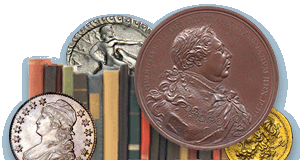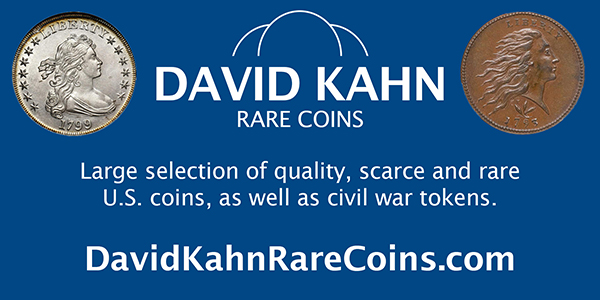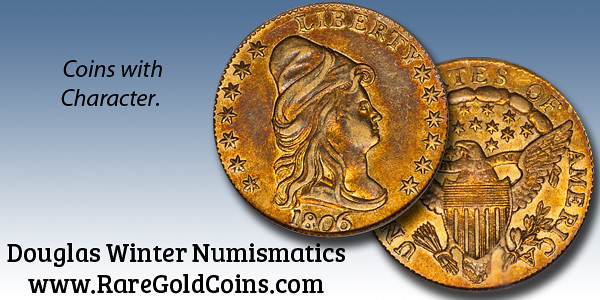
PREV ARTICLE
NEXT ARTICLE
FULL ISSUE
PREV FULL ISSUE
STACK'S BOWERS: FALL 2025 MAASTRICHT AUCTIONStack's Bowers will be hosting their Fall 2025 Maastricht Auction of world paper money on October 2. Select items are discussed below. -Garrett
BAHAMAS. Bahamas Government. 100 Dollars, 1965. P-25b. PMG Very Fine 30. While in rarity it is perhaps equal to the previous lot, the $100 1965 is certainly a true highlight, as we have never sold this variety at auction before, even if we have handled some of the great Commonwealth rarities. Just two examples have been graded in the PMG population report, compared to a rather large quantity of 19 notes of the two-signature variety, which is still a scarce and popular type. The $100 notes from the Bahamas are a bit of an anomaly in the world of paper money. Even though they were printed in reasonably large quantities, up to the late 1990s, their issuance was done rather inconsistently, and all $100 notes (even those printed in the 1990s) are very scarce. Tourists, many of whom come from the United States, will typically use U.S. Dollars, and few would see the local Bahamian currency. The local population had relatively little need for higher denominations, especially in the late 1960s, and small quantities would be distributed to local banks on the various islands, which were enough for local commerce. As a result, dealers and collectors acquired few, and most types are rare. Of course, that does not quite explain the rarity of this note, one theory of which we have outlined in the previous lot. There is no doubt that this is a great rarity, and along with the $50 with triple signatures, this represents an exceptional opportunity. Even the greatest Commonwealth collectors have been unable to acquire this variety, despite their relatively recent issuance. Thankfully, even though this note spent some time in circulation, it is entirely intact and problem-free. It faces up well with considerable originality left. We can't stress enough the rarity of this note and have to mention that this is one of those that we urge you to strongly consider, as you don't want to regret placing just one more bid before the gavel falls on this lot.
To read the complete item description, see:
BELGIAN CONGO. Banque du Congo Belge. 100 Francs, 1.2.1929. P-11f. PMG Choice Very Fine 35. Without branch name. An incredibly scarce type at this grade level, and one of those African colonial notes that more often than not is seen in lower grades, with one or more serious condition issues. By comparison, the present example is noteworthy in its originality and problem-free paper. While some collectors may prefer the issues with branch names, those without a branch name, as seen here, are not much more common, and for the type, this would be an excellent addition to any advanced collection. Not only is it the sole finest for this particular variety, a look at the PMG population report reveals that just two finer notes have been graded for all varieties of this type. Needless to say, whether you are a type collector or try to acquire all different varieties of the Belgian Congo, this is a significant offering that should be considered carefully. Its appearance is fresh, bright, and original. This type is known for being printed on fairly thin paper that is susceptible to tears and excessive handling, but thankfully, this piece has stood the test of time well. An exceptional opportunity, not to be missed.
To read the complete item description, see:
CANADA--DOMINION OF CANADA. Dominion of Canada. 1000 Dollars, 2.1.1925. DC-29S. Specimen. PMG Choice Uncirculated 63. One of just two examples of this specimen in the PMG population as of the time of cataloging, both in equal grade. With just three issued notes of this type in private hands, specimens of this type are almost equally as desirable, and equally as rare. The 1925 $500s and $1000s were quickly produced to replace the 1911 issue in circulation, which were withdrawn following the desire of the Department of Finance to reconcile their accounting of these high denominations. In order to save time, the vignettes of the $1 and $5, respectively, were used. On the $1000 denomination, the portrait of Queen Mary is prominently placed at the center, with the underprint on the front and the color on the back in two shades of orange. The notes were hand signed upon issue, so this specimen, which does have a small red 'SPECIMEN' overprint and punch hole cancellations, is otherwise essentially as issued. Of course, thanks to its tremendous purchasing power at the time of issue, most Canadians would not be familiar with this issue, and we suspect that many were used for interbank transfers and the settlements of larger accounts. Just 30,000 notes were printed, with the first delivery of issued notes taking place in July of 1925, just a few months after the Finance Department ordered them to be produced, in March of the same year. However, as can be expected, with actual circulation fairly limited, most were eventually withdrawn, and today just five issued examples are known to exist, with two of those in institutional holdings. As we mentioned previously, specimens such as this are not much more available, and this example, with bright colors, is an important opportunity for the Canadian specialist. It's been almost 15 years since we last handled this type in any format, and that was a proof, which should give another indication of its tremendous rarity. PMG Comments "Previously Mounted."
To read the complete item description, see:
EGYPT. National Bank of Egypt. 1 Egyptian Pound, 5.1.1899. P-2b. PMG Very Fine 20. One of the greatest rarities in Egyptian paper money, which would perhaps only be passed if an issued 5 Egyptian Pound from this series that is rumored to exist ever appears at public auction. This is the second signature variety of the iconic 'two-camel' 1 Pound, which was first issued in 1899, and was not replaced until a newly designed series entered circulation around 1912. Demand always exceeds supply, and while there are a decent number of notes graded in the PMG population report, there are few auction offerings of this type at public auction in any given decade. In fact, in our lengthy auction history, this is only the third time that we have offered this type in issued format. The Rowlatt signature of the 1899 series was introduced in 1906, replacing an earlier variety with the Palmer signature. The 1 Pound has an even smaller print total than the 50 Piastres, with 350,000 notes printed between the two signature combinations. Like the other denominations, this denomination was printed by Bradbury, Wilkinson & Co. in Great Britain at a time that Egypt was a de facto Egyptian protectorate. It has long been regarded as one of the quintessential African type nots, and not surprisingly, demand for this type is high. The present piece has a very strong visual appearance, with good color for the type. While skillful repairs have enhanced the paper quality, the printed design elements remain original. The signature is strong, and quite unusually, this piece is a more than respectable example of this rare type. An exceptional opportunity for the Egyptian specialist and with demand for key Egyptian notes at an all-time high a note that should see spirited bidding before the gavel strikes on this lot. PMG comments "Repaired."
To read the complete item description, see:
FRANCE. Tresor Central. 5000 Francs, 1.11.1943. P-110s. SB135s2. Specimen. PMG About Uncirculated 55. We have given the historical background of these French notes in the previous lot. Meant for circulation in Corsica, there were three denominations prepared. However, only the 100 Francs is sometimes seen in issued format, as both the 1000 Francs in the previous lot and this 5000 Francs only exist as specimens, and in very limited quantities at that. This is the only specimen in the PMG population report as of the time of cataloging, and while it did see some handling (not surprising given its large format), the color, freshness, and paper quality are exceptional. The designs of these three notes fit the historical time period well. The 1000 Francs seen on the previous lot shows the Phoenix rising out of its ashes, representative of the rebuilding that would await France in the coming years. The 5000 Francs seen here has an even more dramatic design, with Marianne (representing France) leading the country with flag and torch in her hands. Elements representing peace, such as olive branches, are also seen in the design. An exceptional note and surely missing from even the most advanced French or World War II collections, and an offering we do not expect to repeat in the near future. PMG Comments "Printer's Annotations." Provenance: From the Al Kugel Collection.
To read the complete item description, see:
GREECE. Ethniki Trapeza tis Ellados. 500 Drachmai, 8.1.1923. P-77. PMG Extremely Fine 40. Cancelled. One of the great rarities in Greek numismatics and Greek collectors will certainly be familiar with the story of this issue. First of all, we must mention the appearance of the Hagia Sophia, in modern-day Istanbul on the back. Its inclusion on a Greek note is perhaps a bit unusual, but it did serve as the center of the Eastern Orthodox church in two different periods, spanning between 360 and 1453 AD. One of the most well-known buildings of worship, it would serve as a template for Eastern Orthodox architecture. This 500 Drachmai, printed by the American Bank Note Company, is part of a series of notes with denominations ranging from 5 Drachmai to 1000 Drachmai. The lower denominations are sometimes available, but the higher denominations are rare. In fact, while fairly large quantities were printed (the Banknote Book reports a print run of 1 million notes of this denomination), it appears this type was issued in extremely limited quantities, and most remaining notes were later halved, and issued as provisional notes (the 1926 issue, P-80 to P-83). We know this because of communication between ABNC and officials in Greece from the late 1920s and early 1930s. Basically, falsely numbered notes turned up in New York, and according to telegrams, those notes had not been issued. They appear to have been stolen from the printer, with serial numbers falsely added, and then circulated, perhaps among the Greek population of New York. This note has been cancelled, but it is one of just three examples of this Pick number in the population report, and essentially, this or a small number of specimens is the only way that one can reasonably hope to acquire this type. The format seen here is certainly preferred, and while this does come with some problems, its appearance is still strong. An exceptional opportunity for the Greek specialist, not to be missed. PMG Comments "Trimmed, Minor Discoloration."
To read the complete item description, see:
ITALIAN SOMALILAND. Banca d'Italia. 1 Rupia, 13.5.1920. P-2a. PMG Choice About Uncirculated 58 EPQ. Even though our lengthy auction archives include a number of different offerings from Italian Somaliland, this is the first time we have ever been able to offer any of the three denominations issued for the 1920 series. These were issued by the Banca d'Italia, denominated in Rupees ('Rupia' in Italian) and printed by an Italian printer, which is listed as 'E FEDERICI DIS INC.' on the notes. This series was in circulation from 1920 to 1925 and are counted among the rarest issues of North Africa. Of the present type, two dates were issued, of which this is the first. Based on prefixes observed, they had similar print runs, although the 1921 date appears to be scarcer. That said, the 1920 date, seen on this example, can hardly be considered common either, especially at this grade level. Italian Somaliland was a territory in the Horn of Africa that was colonized by Italy in the late 19th century, officially becoming an Italian protectorate in 1889. After being occupied by British forces during World War II it became a United Nations trusteeship under Italian administration in 1949, and it remained so until it gained independence as part of Somalia on July 1, 1960. During the Italian period, infrastructure such as ports, roads, and administrative buildings was developed to support colonial governance and economic exploitation. Sadly, years of civil war and violence in Somalia has ruined much of the area, leaving these notes as one of the few tangible reminders to the region's past. According to the decree that authorized the issuance of these notes they were to be redeemable in silver, but according to the Banknote Book, that convertibility was suspended immediately after these notes were introduced into circulation. Still, they must have circulated extensively, as virtually all known examples are in well circulated grades. In fact, this particular example is the sole finest known, and the next highest grade in the PMG population report is a pair of notes graded Very Fine 30. Additionally, this is the only example of the type that has been awarded the 'Exceptional Paper Quality' designation by PMG. For collectors who appreciate rarity, history, and quality, here is an offering we strongly urge you to consider.
To read the complete item description, see:
MOZAMBIQUE. Banco Nacional Ultramarino. 1000 Reis, 2.1.1897. P-16. BNU MZ17a. PMG Very Fine 25. The finer of just two examples in the PMG population report. A 19th-century rarity from colonial Mozambique the likes of which is only offered at auction once or twice in a generation. The Banco Nacional Ultramarino, initially established in Portugal, became the de facto bank in the Portuguese colonies, establishing a branch at Mozambique island in 1877, and issuing its first notes later that year, which were notes initially printed for the bank's Angola branch which were later overprinted for use in Mozambique. The bank then opened a branch at Lourenço Marques in 1883, following an earlier agency in the same town, which later became Maputo, the capital of Mozambique, in 1898. The note offered in this present lot was issued around the same time, although dated slightly earlier, 2 January 1897. In the late 19th century Lourenço Marques experienced a period of accelerated development, driven largely by improvements to its port. The sheltered anchorage of Delagoa Bay was deepened and equipped with new quays to handle increasing volumes of trade, while the layout of streets and drainage systems in the settlement was gradually formalized to replace the earlier ad hoc arrangements. The introduction of a railway connection to the Transvaal in the 1890s stimulated the construction of warehouses, markets, and administrative buildings, many in masonry, which gave the town a more permanent and organized appearance. Public health measures, such as better water supply and rudimentary sanitation facilities, were implemented to combat recurring outbreaks of tropical disease, and a modest civic culture began to emerge around churches, schools, and social clubs. The Laurence Pope reference on the African paper money of the BNU lists this issue, but only pictures the 1906 issue of the same design, which was printed in gray. Curiously, it lists the color of the back of this type as 'olive-green,' although as seen here, the color is perhaps better described as canary. No print totals are known, but even if there was a considerable print run, it is obvious that most were redeemed or destroyed over time, and surviving examples are rare in any grade. This note has been deemed problem-free by PMG, and we must concur, with all printed design elements clear. The color is vibrant, and the signatures are bold. An exceptional opportunity for the Portuguese colonial or African specialist.
To read the complete item description, see:
PANAMA. Banco Central de Emision de la Republica de Panama. 20 Balboas, 1941. P-25a. PMG Very Fine 25. The 20 Balboas of Panama is considered one of the greatest numismatic rarities in the world. As the highest denomination of this iconic series, which is said to have circulated for only a week, surviving examples are rare, and offerings are infrequent at best. In fact, the acquisition of this denomination is often the highlight of a collecting career. The present lot also represents the first time that we have offered this denomination in two years, which, while it may not seem like a long time, is an indication of the rarity of this denomination. We have covered the details of the creation of this issue in the previous lots, and collectors will surely be intimately familiar with the history of the 1941 issue from Panama. This particular piece is one of only three notes graded at this grade level. Rust mentioned by the grading service is mostly limited to the back and has not completely eaten through the paper. A desirable low 3-digit serial number is seen, although for accuracy, we mention that most of the surviving examples have such low serial numbers. Combined, it makes for an exciting offering, and is a true highlight in this auction. PMG Comments "Rust."
To read the complete item description, see:
Wayne Homren, Editor The Numismatic Bibliomania Society is a non-profit organization promoting numismatic literature. See our web site at coinbooks.org. To submit items for publication in The E-Sylum, write to the Editor at this address: whomren@gmail.com To subscribe go to: Subscribe All Rights Reserved. NBS Home Page Contact the NBS webmaster 
|


















